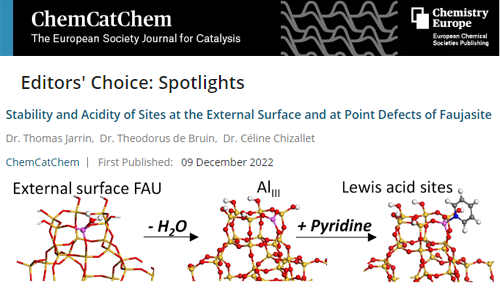Abstract
Faujasite is one of the most industrially employed zeolite for its catalytic properties. The strong Brønsted bulk bridging Al−OH−Si sites are often thought to be the main origin of the Brønsted acidity of faujasite. However, many reactions also take place at the surface of the material and of its mesopores, where other types of acid sites exist. This study aims at unraveling the nature and strength of faujasite bulk and surface acid sites. Using Density Functional Theory (DFT), we rank the faujasite acid sites based on their stability, investigate their dehydration properties, and study their Brønsted and Lewis acidity via the adsorption of pyridine. Calculations are performed on cells with high (47 for bulk cells and about 300 for surface slabs) and low Si/Al ratio (about 3) and on cells containing defects under the form of silanol nests. These environments generate Brønsted acid sites of various strengths, and strong Lewis acid sites, even in the absence of extra-framework species.
Dr. Thomas Jarrin, Dr. Theodorus de Bruin, and Dr. Céline Chizallet
https://doi.org/10.1002/cctc.202201302
ChemCatChem
First Published: 09 December 2022



